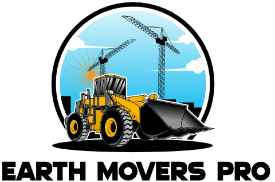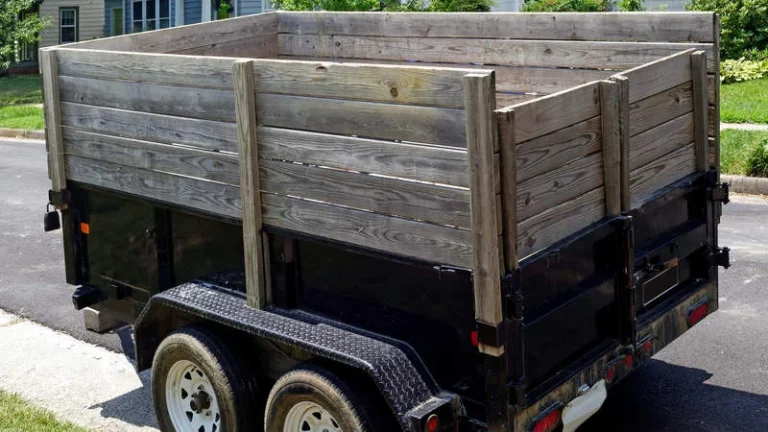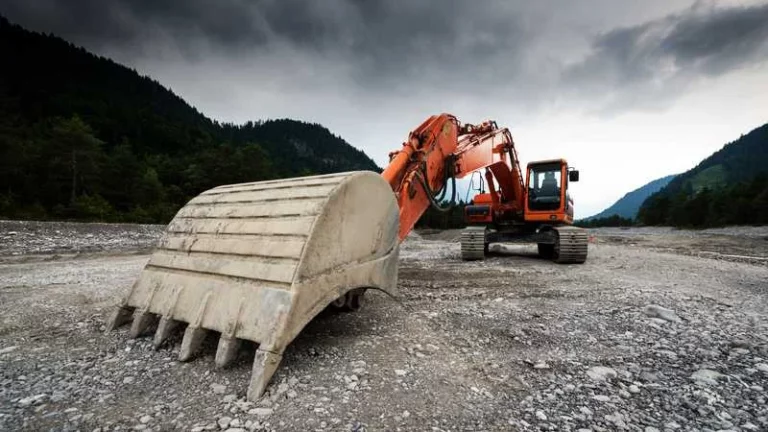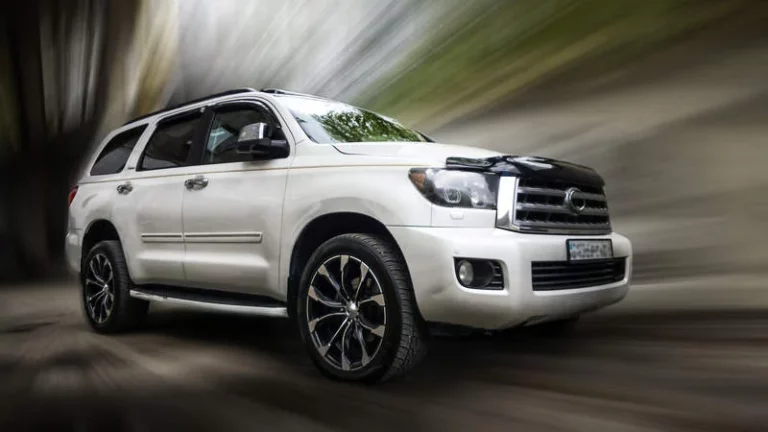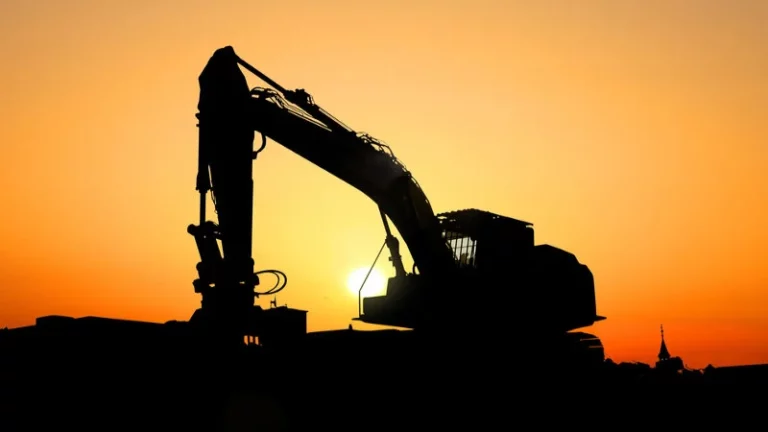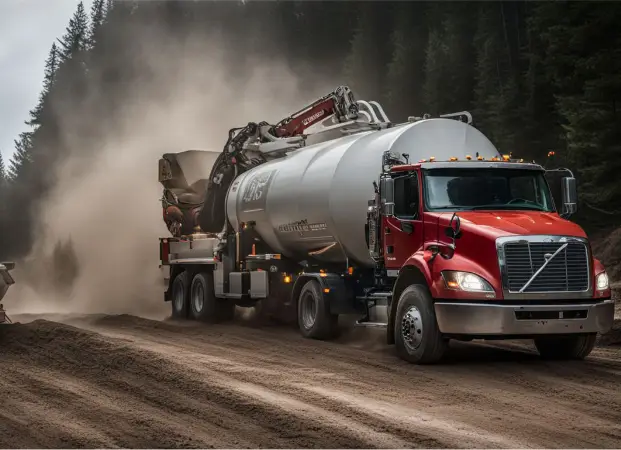Navigating rough terrain with a bulldozer often presents a daunting challenge for many operators. Having experienced similar struggles and dived deep into research, I’ve discovered that caterpillar tracks significantly enhance bulldozers’ usability.
This article will unravel the vital role caterpillar tracks play in improving bulldozer performance in challenging conditions. Ready to have your mind blown? Let’s dig right in!
Key Takeaways
- Caterpillar tracks, also known as continuous tracks, are bands of treads that rotate around a series of wheels in bulldozers. They provide superior traction and weight distribution, allowing bulldozers to traverse challenging terrains like mud or snow without getting stuck.
- Bulldozers equipped with caterpillar tracks offer better performance, even weight distribution, enhanced traction, ease of movement on rough terrain, and increased ground friction compared to traditional wheeled bulldozers.
- Caterpillar tracks ensure optimal grip and stability for bulldozer operators in various conditions while improving fuel efficiency by saving between 11% to 15%. Investing in a bulldozer with caterpillar tracks significantly enhances performance and productivity while reducing operating costs.
Understanding Caterpillar Tracks
Caterpillar tracks, also known as continuous tracks, are bands of treads that rotate around a series of wheels in bulldozers. They are typically made of steel or rubber belts fastened around the wheels.
What are Caterpillar Tracks?
Caterpillar tracks, also known as continuous tracks, are essentially a belt of treads that loop around a series of wheels. They’re commonly used in robust and heavy machinery like bulldozers because of their superior traction and weight distribution capabilities.
Unlike traditional rubber tires, caterpillar tracks are made from either steel or rugged rubber belts securely fastened around the wheels to ensure durability and resistance against challenging terrains.
This design creates a vast surface area which evenly spreads the machine’s weight across the ground—allowing vehicles to traverse soft grounds such as mud or snow without getting stuck.
Plus, given they don’t require air like tires do, these tracks offer additional benefits including increased ground friction for massive gripping power and stability even on hillsides or rough terrain.
The use of Caterpillar Tracks
High-end landscaping equipment like bulldozers often utilize Caterpillar tracks, also known as continuous tracks. These are ideal for robust and heavy machinery – a category that bulldozers certainly fall into.
The basic principle behind these tracks is straightforward: it’s an interconnected chain of steel or rubber plates wrapped around the machine’s wheels to create a continuous track.
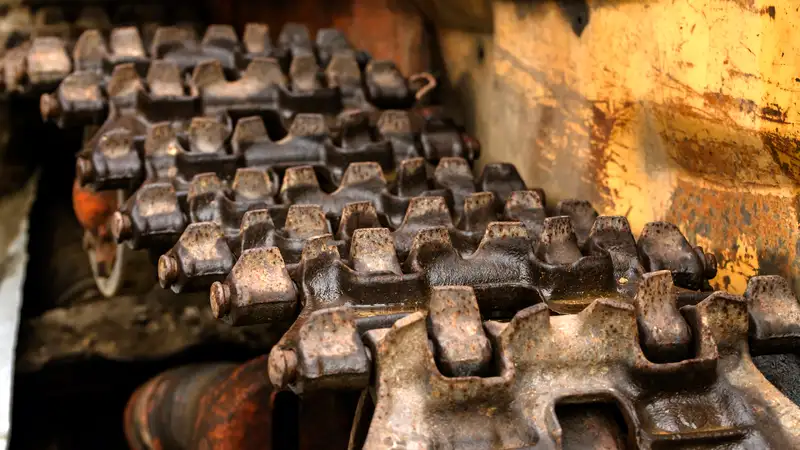
But why use them on construction sites?
Caterpillar tracks hyper-focus on offering you the operator optimized traction system, even when dealing with challenging terrains such as snow or wet concrete. High-end bulldozers can easily traverse through soft grounds, including mud and icy dirt roads without getting stuck, all thanks to these durable metal chains.
The secret lies in their ability to distribute weight evenly across the track surface area rather than concentrating it solely on four corners like your traditional wheels do.
Furthermore, unlike tires that have air inside them and could easily deflate under harsh conditions, caterpillar tracks offer increased ground friction due to their solid nature – improving both stability and control during operation hours.
This means you get better performance while moving on rough terrain regardless if its gravel road or uneven natural surfaces.
For those who took up work in fields such as clearing & grading or road maintenance tasks where fuel efficiency is key – listen up! Caterpillar equipped bulldozer units can save between 11%–15% fuel compared to others outfitted with tires.
Not only does this mean fewer trips to the gas station but also substantial savings for operators over time.
In essence, incorporating caterpillars extends far beyond simply having unique looking gear; they’re integral elements designed precisely for improving workload efficiency whilst ensuring cost-effectiveness throughout your operations tenure at any worksite plan you affiliate yourself within today’s demanding construction market economy.
Why Do Bulldozers Have Caterpillar Tracks?
Bulldozers have caterpillar tracks because they offer better performance, even weight distribution, enhanced traction, ease of movement on rough terrain, and increased ground friction.
Better Performance
As an operator of bulldozers, you’ll find that caterpillar tracks or continuous tracks significantly enhance the performance of these heavy machines. By design, they promote even weight distribution across a wide surface area compared to traditional wheels.
This gives your dozer far superior balance and stability on all types of surfaces – be it soft soil, snow, wet concrete, or rough terrain. What’s more impressive is the level of traction provided by these metal or rubber belts around wheels; it’s unmatched! The high friction against the ground ensures our machinery rarely gets stuck, making operations smoother and faster.
Fuel savings are another big win; research shows we can save between 11% to 15%, reducing operating costs considerably over time. Interestingly, plots worked upon using tracked bulldozers reportedly had a greater yield too – up about 5%.
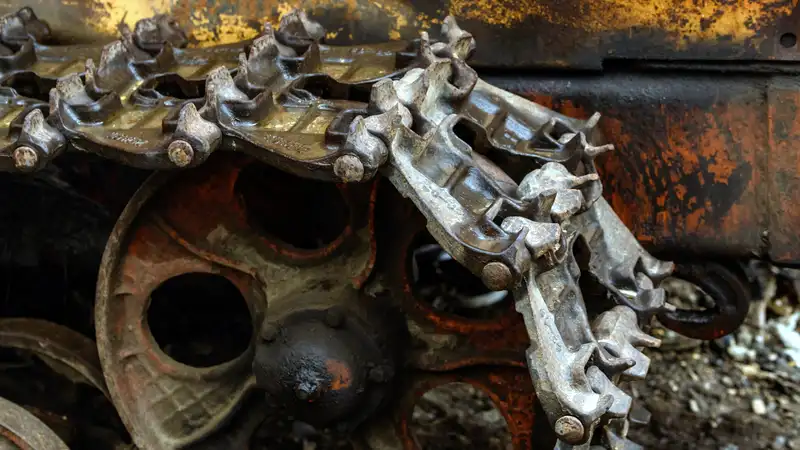
So when we talk about better performance in terms of efficiency, speed and cost-effectiveness – caterpillar tracks take your bulldozer’s game up several notches!
Even Distribution of Weight
One crucial benefit of bulldozers having caterpillar tracks is the even distribution of weight they provide. With wheels, the weight of the bulldozer is concentrated in specific areas, which can lead to sinking or damage when operating in challenging environments.
However, with caterpillar tracks, the weight is dispersed over a larger surface area, preventing sinking and ensuring stability on soft grounds or rough terrain. This even distribution of weight also creates a lower center of gravity for the bulldozer, making it ideal for off-road landscapes and slippery areas where maintaining balance and traction are essential.
So whether you’re working on construction sites or tackling field work, caterpillar tracks offer enhanced stability and maneuverability to get the job done effectively and efficiently.
Enhanced Traction
One of the key advantages of bulldozers with caterpillar tracks is the enhanced traction they provide. The design of these tracks allows for greater contact with the ground, ensuring a firm grip even on soft or slippery surfaces.
This means that bulldozer operators can confidently tackle rough terrain without worrying about slippage or loss of control.
The continuous tracks distribute weight evenly, increasing the amount of surface area in contact with the ground. This not only improves stability but also prevents sinking in challenging environments.
Bulldozer tracks are especially beneficial when working on steep inclines or uneven surfaces, as they help to prevent tipping and maintain control.
With enhanced traction from caterpillar tracks, bulldozer operators can confidently maneuver through difficult conditions such as muddy fields or snowy roads. These tracks provide optimal grip and allow for efficient movement even in harsh weather conditions, making them an essential feature for any heavy machinery operator.
Ease of Movement on Rough Terrain
Moving a bulldozer on rough terrain can be a challenging task, but with caterpillar tracks, it becomes remarkably easier. Bulldozers equipped with tracks have the advantage of superior traction and stability on uneven surfaces.
The continuous metal chains of caterpillar tracks allow the machine to effortlessly navigate through rough terrains without getting stuck or losing control. These robust and heavy machinery provide high flotation, effectively bridging over irregularities in fields while avoiding sinking into soft soil.
With their optimized traction system, bulldozers with tracks ensure smooth movement even in the toughest conditions, making them an invaluable asset for any bulldozer operator working in diverse landscapes.
Increased Ground Friction
One of the key advantages of bulldozers with caterpillar tracks is the increased ground friction they provide. Unlike wheeled bulldozers, which only distribute weight on the four corners, caterpillar tracks evenly distribute the weight of the vehicle around the engine.
This results in improved stability and massive gripping power, allowing bulldozers to move confidently on various terrains without slipping or losing traction. The continuous bands of treads rotating around a series of wheels create a larger surface area that generates significant ground friction, enabling these powerful machines to push through even the toughest conditions.
With enhanced ground friction, bulldozer operators can tackle any job with ease and efficiency.
Comparing Tracks Vs Wheels
When comparing caterpillar tracks to wheels, it’s clear that tracks offer numerous benefits and advantages. With their continuous bands of treads rotating around a series of wheels, caterpillar tracks provide better performance, enhanced traction, and ease of movement on rough terrain compared to traditional wheel systems.
Additionally, due to the increased ground friction and weight distribution capabilities of caterpillar tracks, bulldozers equipped with them have higher ground gripping power and are more efficient in pulling loads.
Furthermore, research has shown that bulldozers with caterpillar tracks save fuel costs by 11% to 15% compared to those with tires. Overall, for optimum performance and cost-effectiveness in heavy machinery like bulldozers, choosing caterpillar tracks over wheels is a smart choice.
Benefits Of Tracks Vs Wheels
As a bulldozer operator, I know the importance of choosing the right equipment for the job. When it comes to bulldozers, there are two main options: tracks or wheels. Let me tell you why tracks have some significant benefits over wheels.
- Better Performance:
- Enhanced Traction:
- Ease of Movement on Rough Terrain:
- Increased Ground Friction:
- Fuel Efficiency:
- Lower Maintenance Costs:
- Increase in Overall Yield:
Differences Between Tracks and Wheels
As an experienced bulldozer operator, understanding the differences between tracks and wheels can help determine the best choice for the job at hand. Let’s explore these differences in detail.
| Parameter | Tracks | Wheels |
|---|---|---|
| Weight Distribution | Caterpillar tracks distribute the weight around the engine, resulting in a more even distribution. | Wheels concentrate weight on just the four corners, which can lead to uneven distribution. |
| Traction | Tracks provide high traction, even on slippery terrains like snow or wet concrete, thanks to their increased ground friction. | Wheels have lower grip, especially on challenging terrains, due to less ground friction. |
| Terrain Suitability | The large surface area of tracks allows bulldozers to traverse soft or uneven grounds without getting stuck. | Wheels are less suited for uneven or soft terrains as they can quickly get bogged down. |
| Fuel Efficiency | Bulldozers with tracks can save 11% to 15% of fuel compared to those with wheels. | Wheeled bulldozers are less fuel-efficient, leading to higher operating costs. |
| Horsepower Requirement | The use of tracks in bulldozers can lower the horsepower requirement, leading to further fuel savings. | Wheeled bulldozers generally require more horsepower, leading to higher fuel consumption. |
| Yield Increase | Bulldozers with tracks can increase overall yield by 5%. | Wheeled bulldozers have not shown a significant increase in yields. |
As you can see, the benefits offered by caterpillar tracks in terms of weight distribution, traction, terrain suitability, fuel efficiency and horsepower requirement make them a superior choice for bulldozers over wheels.
Conclusion
In conclusion, caterpillar tracks are a vital component of bulldozers that significantly enhance their performance and capabilities. With better weight distribution, enhanced traction, and the ability to maneuver on rough terrain, caterpillar tracks ensure that bulldozers can tackle any job with ease.
The increased ground friction and fuel efficiency offered by tracks make them an essential feature for operators looking to maximize productivity and minimize costs. So when it comes to bulldozers, caterpillar tracks truly are indispensable.
FAQs
1. Why are caterpillar tracks important for bulldozers?
Caterpillar tracks in bulldozers are essential pieces of equipment. They provide traction and distribute the weight of the machine over a larger surface area, allowing the bulldozer to maneuver in rough terrains and work efficiently on a worksite.
2. How do caterpillar tracks improve the performance of dozers?
Caterpillar tracks distribute the weight of the bulldozer over a larger surface area, reducing ground pressure and minimizing soil compaction. This enables the machine to maneuver easily while exerting greater pushing power.
3. Can dozers with wheels perform the same tasks as those with caterpillar tracks?
Bulldozers equipped with wheels have limited capabilities compared to those with caterpillar tracks. While they can be more suitable for certain applications like highway construction, they lack the traction and versatility needed for challenging terrains.
4. Are there any disadvantages to using caterpillar tracks on bulldozers?
Although caterpillar tracks offer numerous advantages, they do come with some downsides. Tracks require regular maintenance and can be more expensive to replace than wheels. Additionally, they tend to have higher fuel consumption due to increased friction between the track links and ground surface.
5. Can a bulldozer operate without tracks?
No, a bulldozer cannot operate without tracks. Tracks are an integral part of the bulldozer’s undercarriage system. Without tracks, the bulldozer would lose traction and stability, severely impairing its performance. The track system not only provides necessary traction but also supports the weight of the machine and allows it to navigate various terrains.
6. What is the purpose of an idler wheel in a bulldozer’s track system?
An idler wheel is an essential component in a bulldozer’s track system. It helps to guide the track and maintain tension for proper operation. The idler wheel is positioned at the end of the track opposite the sprocket and plays a crucial role in ensuring smooth movement and preventing track derailment.
